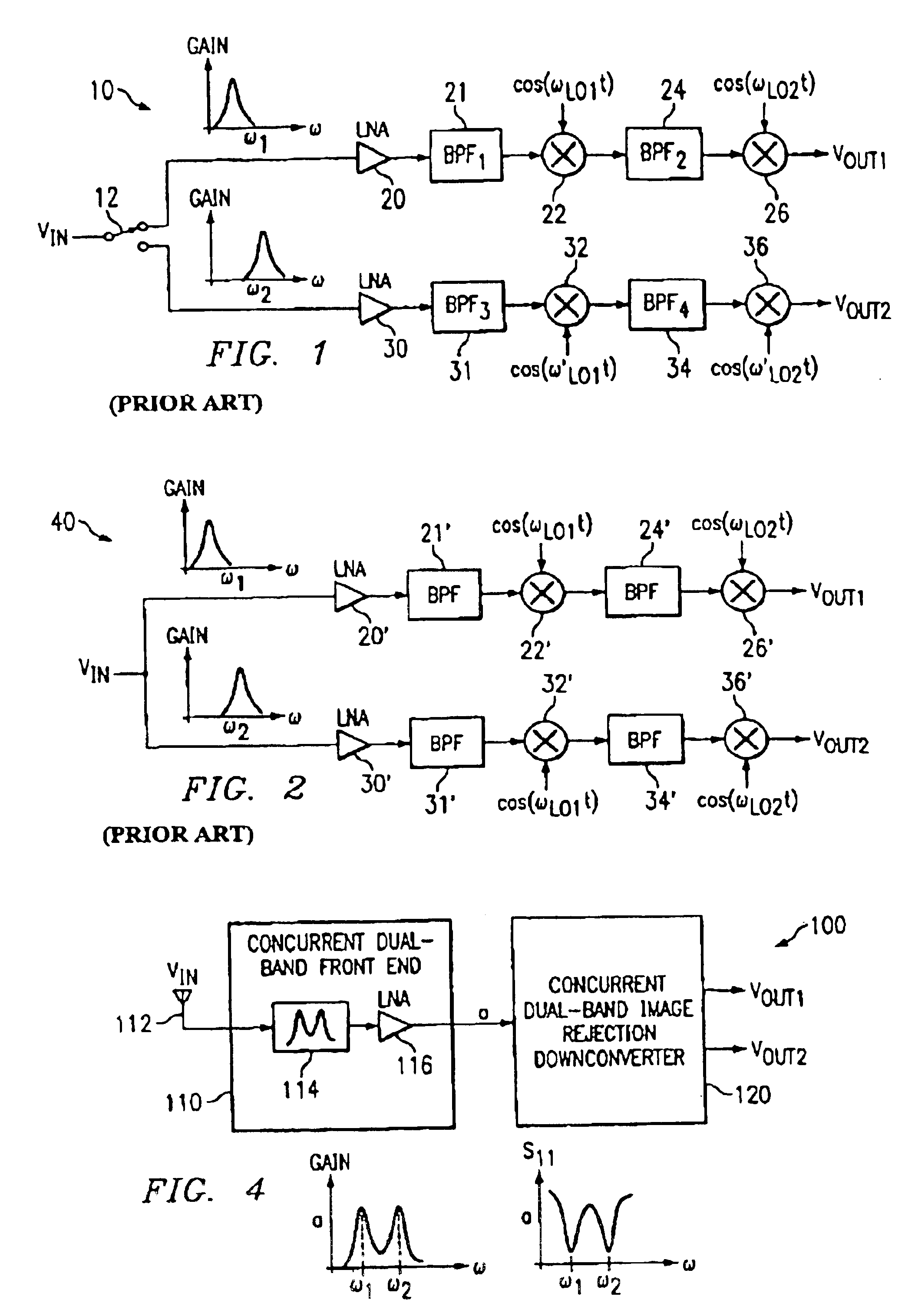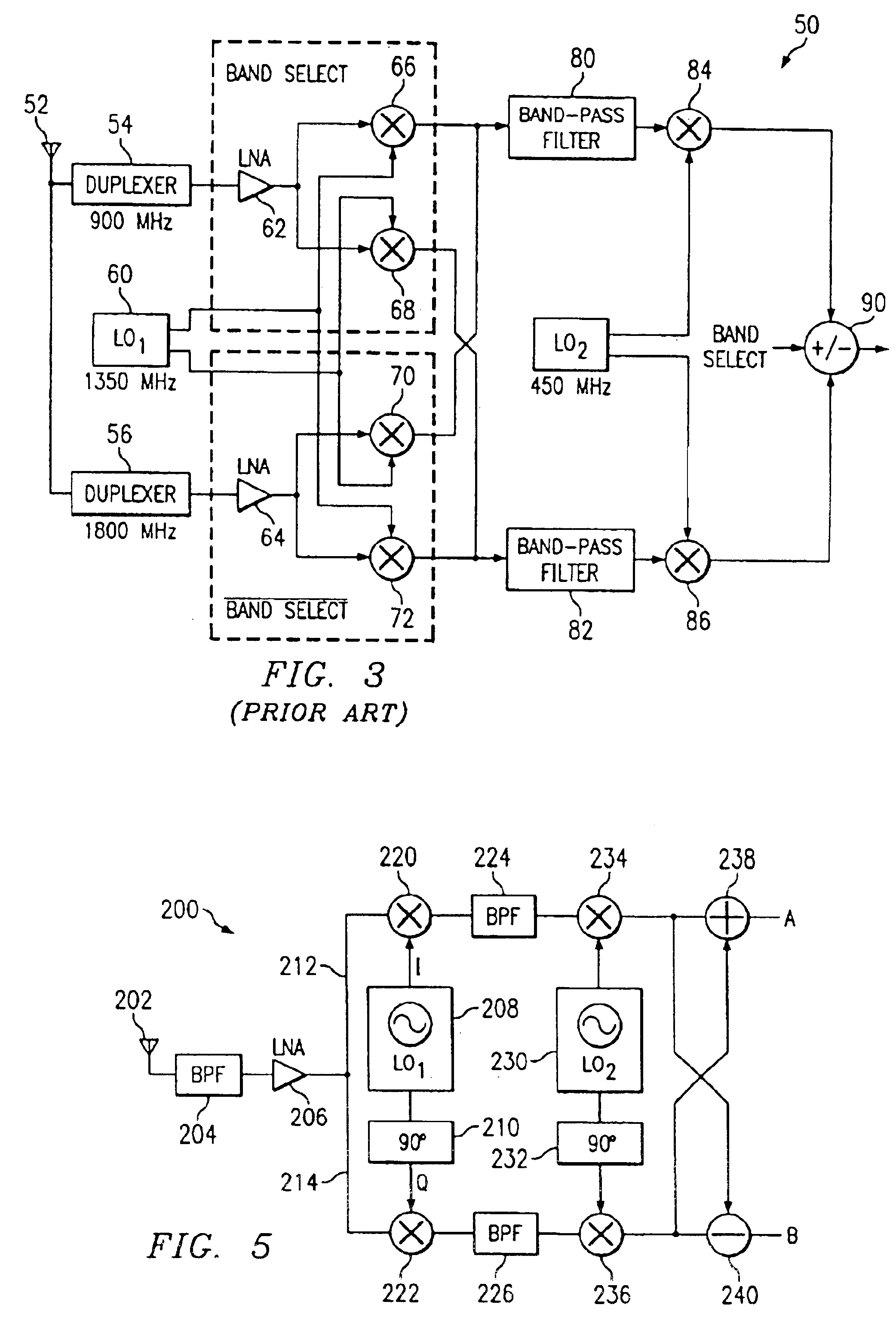Concurrent dual-band receiver architecture
a receiver and dual-band technology, applied in the field of high-frequency receivers, can solve the problems of insufficient multi-functional device next-generation, inconvenient operation, and inefficient components of the receiver, so as to increase reduce the cost and footprint, and reduce the effect of power consumption
- Summary
- Abstract
- Description
- Claims
- Application Information
AI Technical Summary
Benefits of technology
Problems solved by technology
Method used
Image
Examples
Embodiment Construction
[0043]The invention summarized above and defined by the enumerated claims may be better understood by referring to the following detailed description, which should be read in conjunction with the accompanying drawings. This detailed description of particular preferred embodiments, set out below to enable one to build and use particular implementations of the invention, is not intended to limit the enumerated claims, but to serve as a particular examples thereof. The particular example set out below is the preferred specific implementations of a concurrent dual-band high frequency RF receiver and methods for designing the same. It should be understood however, that this system and technique is not limited to dual-band receivers, but may be extended to other applications, such as transmitters and transceivers. It should also be understood that the term “concurrent” refers to the ability to process a signal having two frequency bands of interest simultaneously or substantially simultan...
PUM
 Login to View More
Login to View More Abstract
Description
Claims
Application Information
 Login to View More
Login to View More - R&D
- Intellectual Property
- Life Sciences
- Materials
- Tech Scout
- Unparalleled Data Quality
- Higher Quality Content
- 60% Fewer Hallucinations
Browse by: Latest US Patents, China's latest patents, Technical Efficacy Thesaurus, Application Domain, Technology Topic, Popular Technical Reports.
© 2025 PatSnap. All rights reserved.Legal|Privacy policy|Modern Slavery Act Transparency Statement|Sitemap|About US| Contact US: help@patsnap.com



